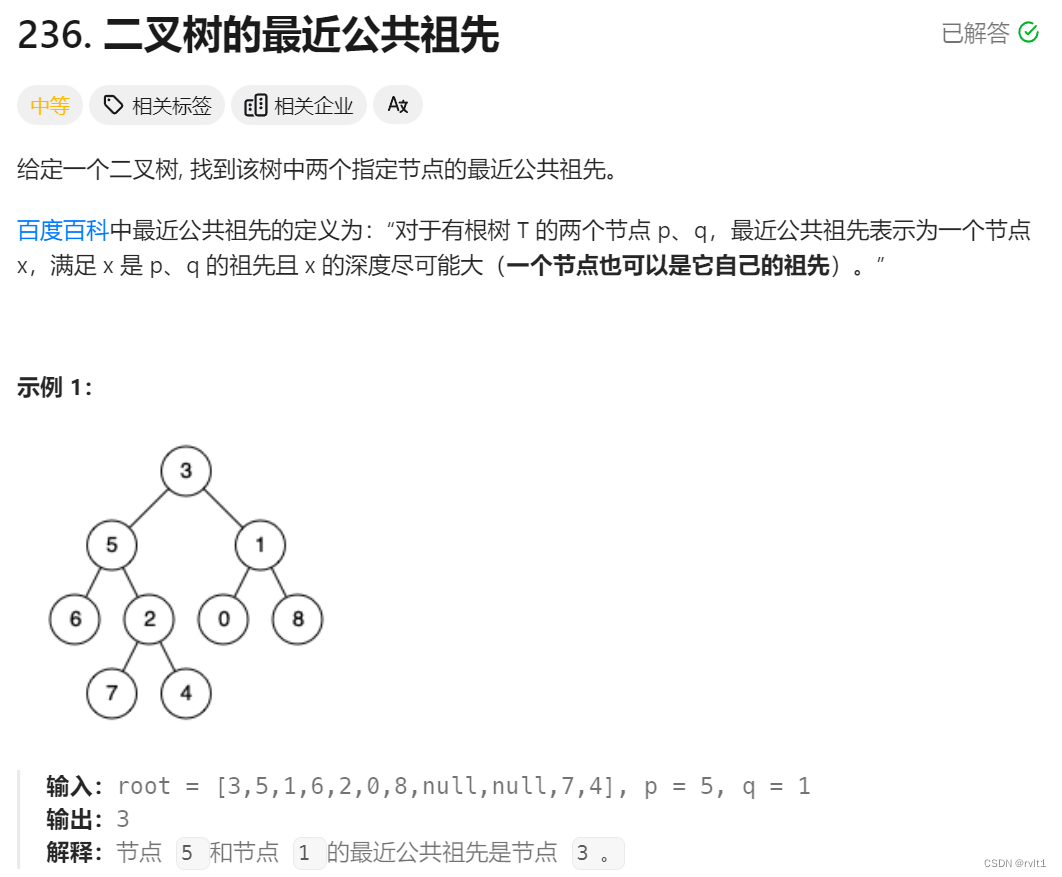
/**
* Definition for a binary tree node.
* public class TreeNode {
* int val;
* TreeNode left;
* TreeNode right;
* TreeNode(int x) { val = x; }
* }
*/
//用f(x)表示x节点的子树是否包含p或者q
//则满足公共祖先节点有两种情况组成
//1.f(x.left) && f(x.right)
//2.f(x.left) || f(x.right) && x==另一个
class Solution {
TreeNode ans = new TreeNode();
public boolean dfs(TreeNode root, TreeNode p, TreeNode q){
if(root == null) return false;
boolean lson = dfs(root.left, p, q);
boolean rson = dfs(root.right, p, q);
//情况1
if(lson && rson){
ans = root;
}
//情况2
else if((lson || rson) && (root.val == q.val || root.val == p.val)){
ans = root;
}
//因为所有结点的val都不相同,所以直接返回就行,不用考虑复杂情况
return rson || lson || (root.val == p.val || root.val == q.val);
}
public TreeNode lowestCommonAncestor(TreeNode root, TreeNode p, TreeNode q) {
dfs(root, p, q);
return ans;
}
}





 本文介绍了一个使用深度优先搜索(DFS)算法在二叉树中查找两个节点的最低公共祖先的方法,通过递归实现判断节点的子树是否包含目标节点或两者之一等于根节点。
本文介绍了一个使用深度优先搜索(DFS)算法在二叉树中查找两个节点的最低公共祖先的方法,通过递归实现判断节点的子树是否包含目标节点或两者之一等于根节点。
















 618
618

 被折叠的 条评论
为什么被折叠?
被折叠的 条评论
为什么被折叠?








